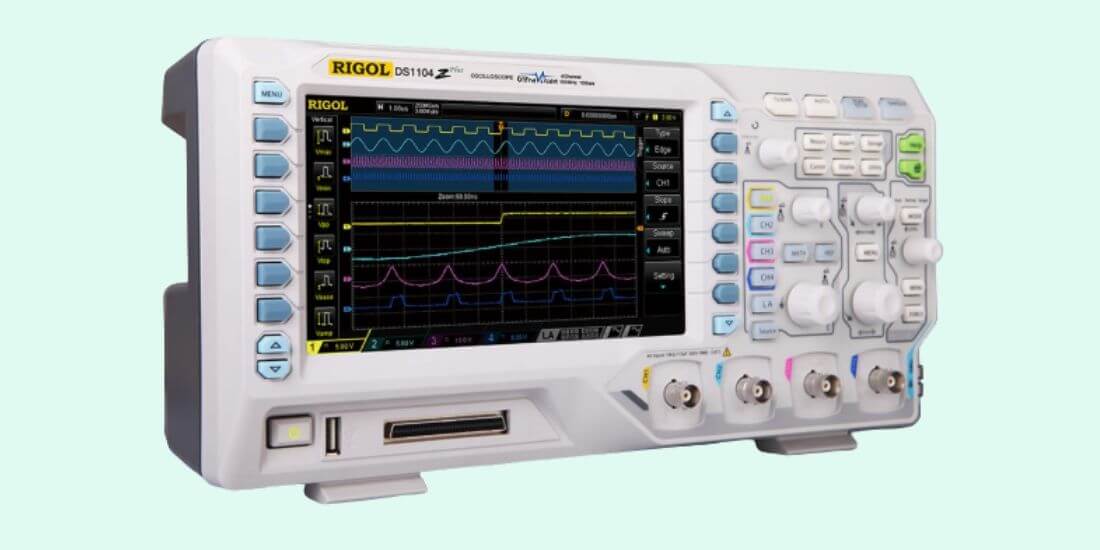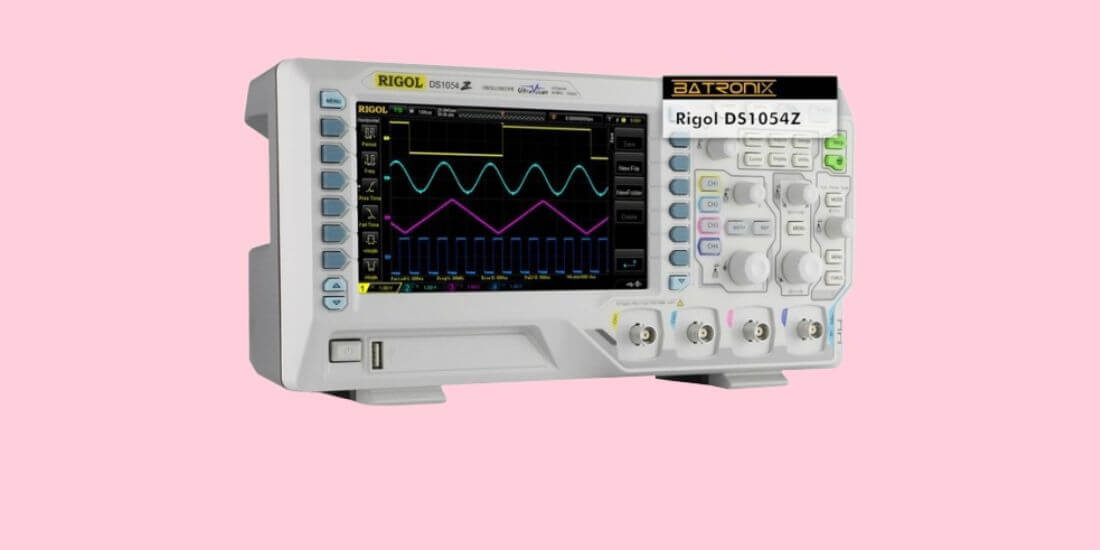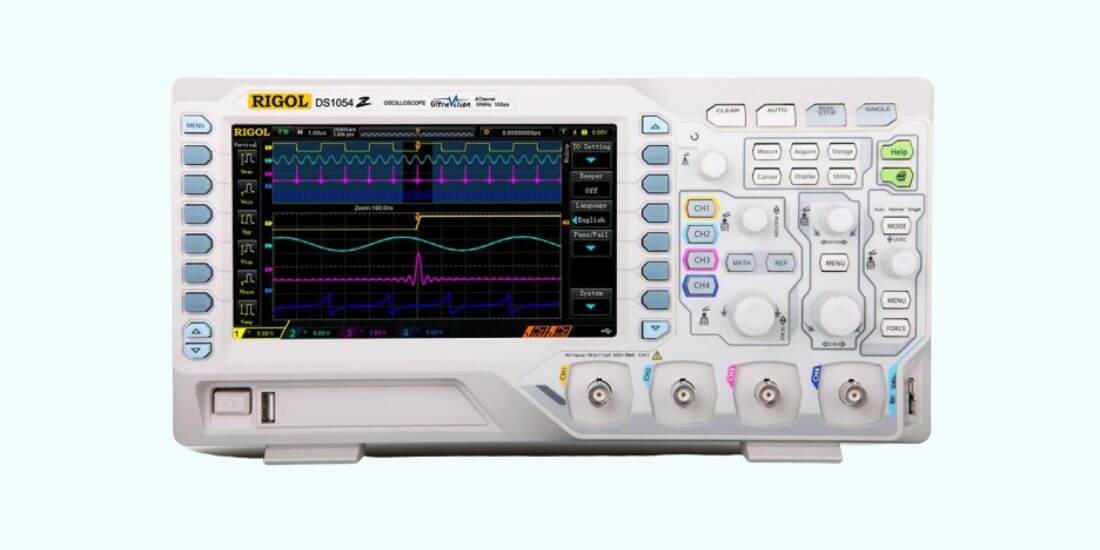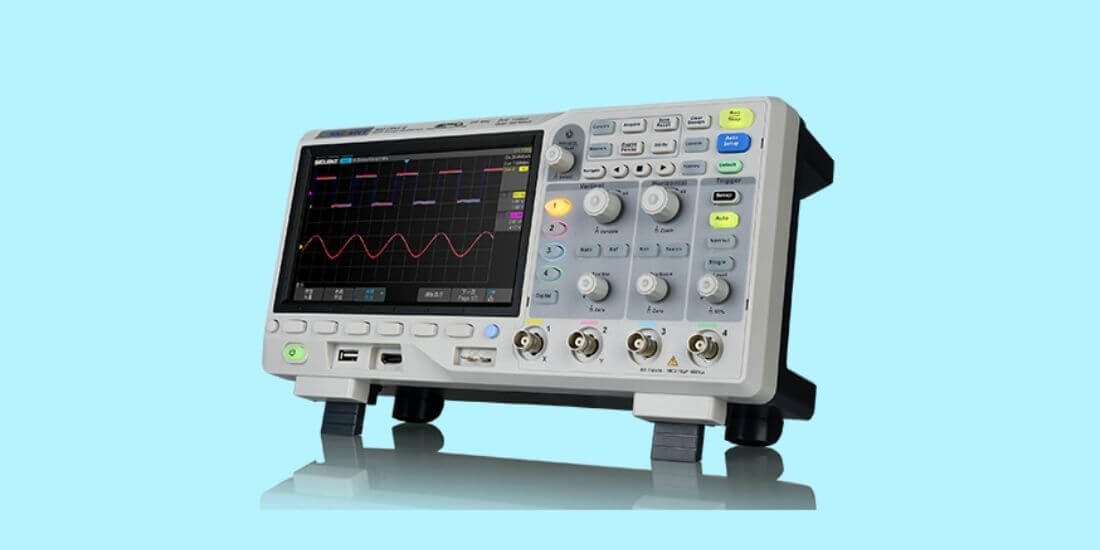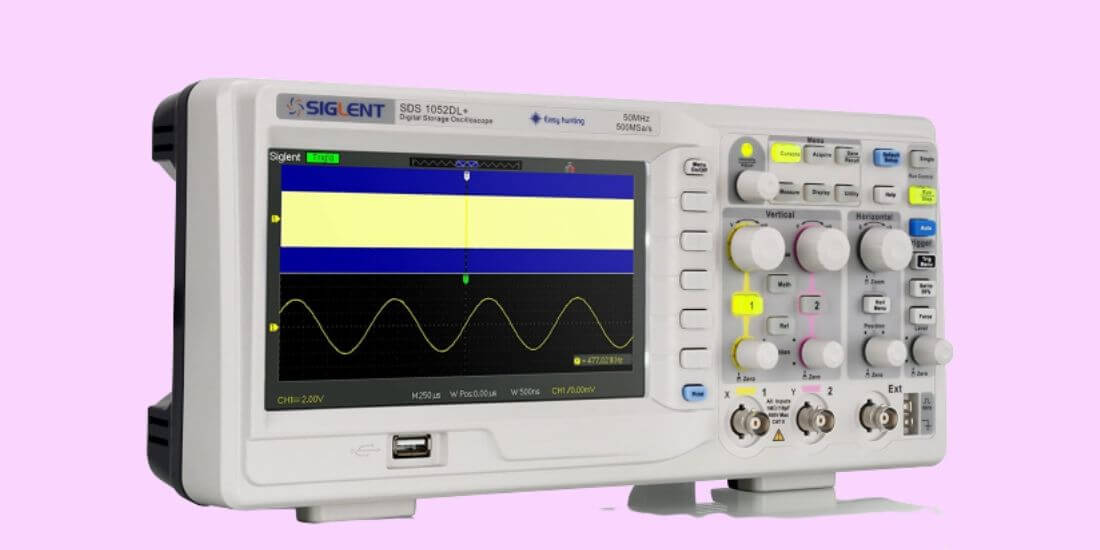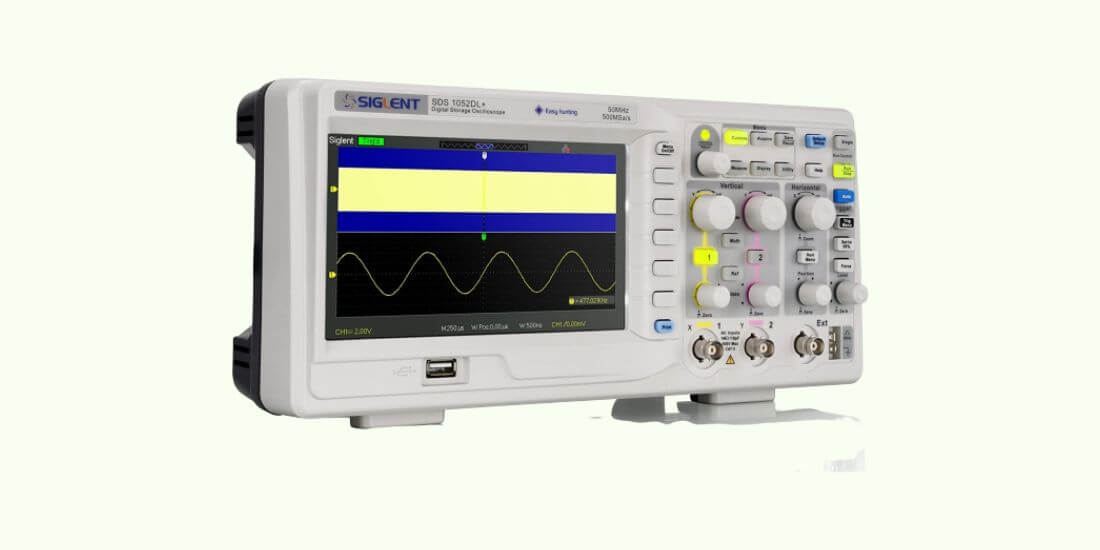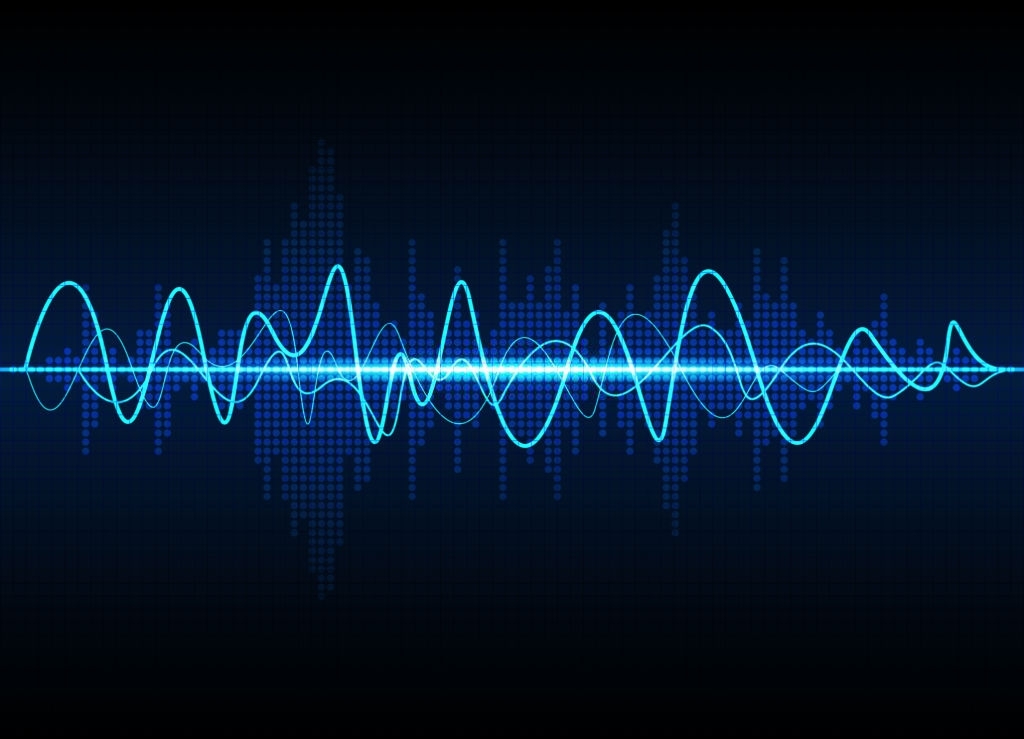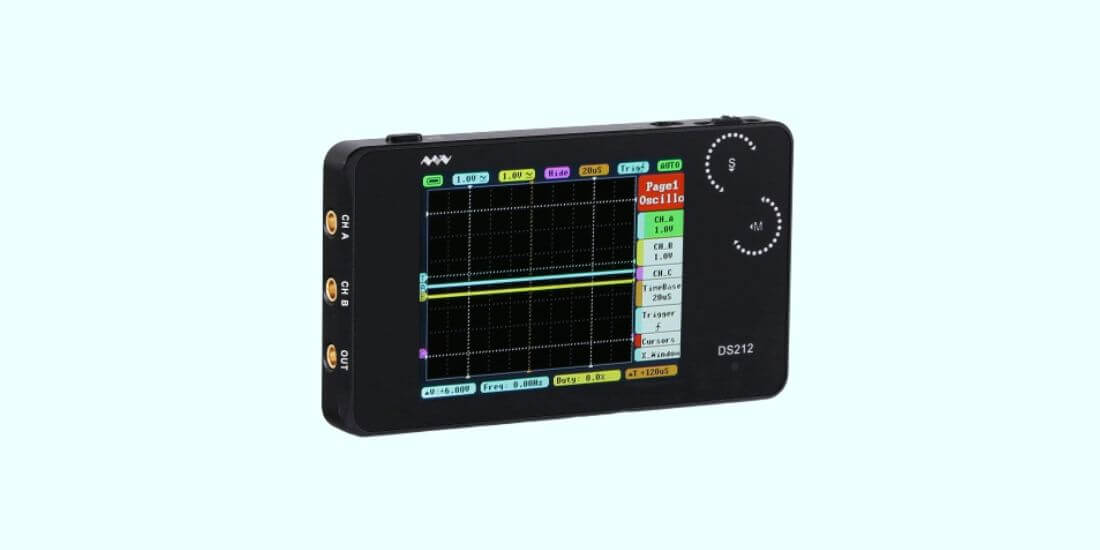Oscilloscopes are instruments used in the laboratory which is used to analyze waves of electronic signals.
It has a small screen that displays the results in the form of graphs of instantaneous signal voltage as a function of time, and in simple words, it’s a voltage versus time graph, and they are usually called waveforms.
And oscilloscope, mainly for its dynamic functions, is used for many things, and in this article, we’ll learn what an oscilloscope is used for.
Let’s get started.
What Is an Oscilloscope Used for?
An oscilloscope has a wide range as it can measure frequency that is as low as 1 hertz and as high as several mega or gigahertz.
It can also measure both AC and DC. As mentioned earlier that the graph plotted on the screen is a voltage vs. time graph where voltage is plotted on the y-axis, and time is plotted on the x-axis.
Hence it can show you if the voltage is becoming negative at any point. Mostly the graph appears to be like a sine curve. However, it could be other shapes as well.
The calculations that you can do from the graph provided on the screen of the oscilloscope are listed below. check out the top oscilloscope guide under $1000
Calculating the Time Period of a Wave
You can find the time period of the electrical wave, that is the time it takes for the wave to complete a full oscillation.
Measuring the Amplitude
Amplitude can be found from the waves, which are the distance from the x-axis to the peak of the curve.
Computing the Distance between Troughs
You can also calculate the distance between two troughs of the wave, which we call the peak to peak voltage.
Determining the Frequency
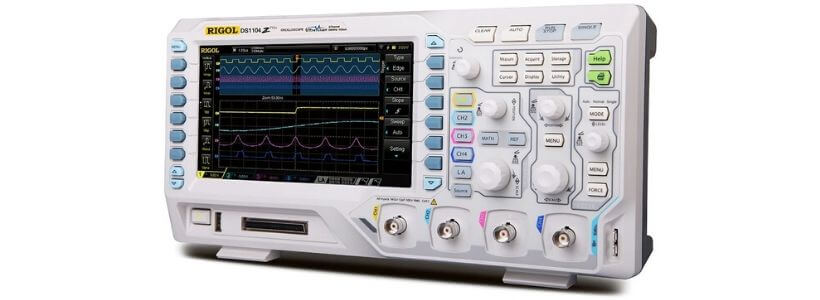
One of the most obvious use is that we can measure the frequency, that is the count of oscillations per second, from the graph displayed on the screen.
Real-Life Use
Oscilloscopes are used in many real-life situations and some of which are mentioned in the following.
Operating Systems
You can use the oscilloscopes for understanding the operating system of circuits or a power line consonants. It is also very useful when it comes to studying the operating system of any power conversion devices.
Serial Data Analysis
They are also used for serial data analysis, like representing and evaluating data formatted in USB or Bluetooth.
Jitter Analysis
Jitter analysis can be done with an oscilloscope as well when you work with high performing fast clocks. You can use it to represent, evaluate, and debug signal jitter and can be essential when working with the timing for the clock applications.
Disk Driver Designs
Testing disk driver designs is also another application of a modern-day oscilloscope, and this is usually done by considering disk performance. Some components, such as the media noise or optical recording, etc. can come into play as well.
Time Domain Reflectometry (TDR)
Oscilloscopes may also be used to measure impedance values, variations, fluctuations, or faults, in other words, time-domain reflectometry or TDR.
TDR is often used in cable connectors and transmission cables. Moreover, they are found in microstrips on a circuit board.
Conclusion
As you can see, an oscilloscope is an essential piece of equipment that we need to have for the smooth life we crave every day. It is used to perform, design, test, important tasks, and detect and repair faults in pieces of machinery that are crucial for our survival.
It is used by mechanics, researchers, technicians, and physicists every day. I hope this article has helped you realized how crucial an oscilloscope is to our life.
-
If you have ever been to an electronics laboratory at your university, you have definitely…
-
An oscilloscope is a powerful diagnosis and measuring tool for electric circuits. The advantage that…
-
One of the best ways to ensure the safety and efficiency of your electronics is…
-
Whether you are a beginner or a professional, you will surely look for an oscilloscope…
-
Oscilloscopes are notoriously expensive. Whether you’re an enthusiast or a professional, you know how costly…
-
Imagine a movie scene inside a hospital. What machinery do you see? Whatever you’re imagining,…
-
An oscilloscope is a device used to view the voltage of an electrical component in…
-
Oscilloscopes are fantastic devices for troubleshooting and fixing a new circuit. Whenever you come up…

